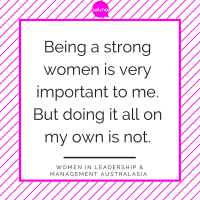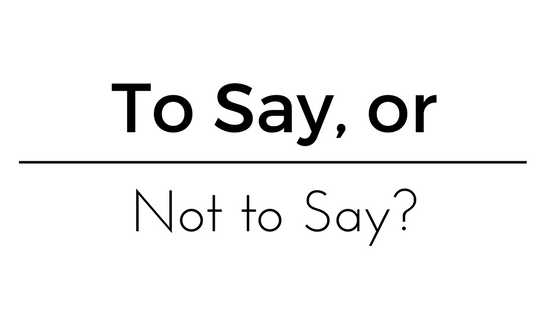The building, construction and property services industries are generally perceived to be ‘male dominated’ with the representation of women remaining low across all levels.
Key contributors include; industries struggling to attract women to consider and apply for jobs and challenges in engaging and retaining the women who have chosen to work in these industries. However, the stimulus for change is growing and there is now a focus on increasing the representation of women in these industries and there are large amounts of evidence to reinforce these findings. Studies by IBM, Gerzema, Young Rubicam and Zenger Folkman suggest the skills women tend to possess, are characteristics that help local and global organisations succeed. These are also the qualities necessary to tackle the world’s most complex, intractable problems: compassion, collaboration and the ability to create and drive an inspiring vision. The organisations that embrace these changes, and actively develop and implement strategies to attract, recruit and retain women, will reap the economic benefits of gender diversity and equality and be the most competitive and sustainable in the long term.
Women are underrepresented in these industries
Women represent almost 46% of all employees in Australia and in many sectors there is continuing growth of women in leadership positions. The Workplace Gender Equality Agency, reports that in 2011 over 33% of managers reporting in organisations were women. Industries that have the greatest representation at all levels include health care, education, training and retail trades.
In Industries described as ‘male-dominated’, including mining, construction and utilities, the picture is vastly different. Not only are women underrepresented in leadership and managerial roles, they are also underrepresented across all levels of organisations.
Industry Snapshot 2014
Women represent around 11 percent of the workforce in the construction sector and as little and one percent of the manual trades, presenting serious problems on the horizon for the construction industry. Approximately one in five workers are approaching retirement age, and a further 26 percent are between 45 and 55 years old; replacing these retirees alone renders a big recruitment challenge. In addition, research by the Construction Industry Training Board 2014 estimated that 182,000 extra jobs will be created in the next five years as the economy improves.
Given the projected loss of skilled labour over the next few years, it is clear the construction industry cannot just sit back and do nothing. The sector, does face a challenge in recruitment; with most young people having little idea of the wide range of employment opportunities available. The industry must overhaul its recruitment campaigns and change its image and culture if it is to become an attractive modern employment choice.
However, this will not happen without significant action. The government in collaboration with industry needs to take a stronger lead in articulating the business case for change and helping to increase those programmes currently in operation. Culture change is essential to make the industry more welcoming of women. Working on this would enhance the image of the construction sector, showing it as a modern, diverse and inclusive industry; a career destination.
Women’s representation across non-traditional Industries in Australia
All industries: 45.7% of employees 33% of managers
Construction: 11.8% of employees 16% of managers
Mining: 15.1% of employees 13% of managers
Utilities: 22.6% of employees 16% of managers
To achieve substantive gender equality and the resulting economic benefits, Key Stakeholders need to increase representation of women and to strengthen the pipeline of female talent within all industries, including those that currently have a primarily male workforce pool.
Addressing the current barriers for women
The Australian Human Rights Commission recently held interviews and round table discussions with employees in the mining, construction and utilities industries that highlighted a number of barriers that must be addressed to increase women’s representation. These barriers include:
- Lack of family role models: From the very start, girls are not exposed to career paths in the mining, construction and utilities industries as early or as often as boys. Many boys learn about potential roles in these industries from their fathers or other male relatives. However, girls are not likely to come across these opportunities until later in life, if they do not have access to male role models in these industries. In addition, this exposure is more likely to occur in formal settings than from in-depth, personal connections, that may be made among men.
- Stereotypes and gender bias starting at school: Career decisions are reinforced with educational choices made during school and post-secondary education. Given this role stereotyping, there is gender segregation in education subjects, with girls more likely to consider education and careers in the humanities or social sciences rather than engineering or technical fields. The Harvard Implicit Association Test (IAT), which has tested more than a half million people globally, has shown that more than 70 percent of test takers associated ‘male’ with science and ‘female’ with arts. Such implicit beliefs directly influence parents’ (and other family members and friends) decisions to encourage or discourage young girls from pursuing science and engineering subjects and careers. This may then be reinforced by teachers and career advisers.
- Negative perception and lack of awareness: Even with the ‘right’ education, relatively few women are choosing to consider and apply for roles within traditionally male industries. Part of the reason is a negative perception of the industries, or anecdotal feedback from others, about a negative experience. Another factor is a lack of awareness of the opportunities and the career paths that are available within these industries.
- Stereotypes and myths about women in the workplace: Organisations within these industries are not addressing the stereotypes and assumptions about the sort of work women can do, have the skills to do, their potential performance and their commitment to their careers. Prejudice about women’s lack of ability and aspiration, and the roles women should do (such as caring and motherhood) are then used to justify the activities of organisations that exclude women from recruitment and development activities.
Acknowledgement of the important contribution that women bring to non traditional industries and reinforcement of shared support is fundamental to the empowerment of women. Fostering interest among employers from the top ->down, regardless of whether SME’s or large organisations; to embrace gender diversity as a positive workplace culture is essential if we are to increase job placements for women and streamline job transitioning and career advancement. Increasing women’s participation leads to enhanced organisational performance, productivity, interaction, diversity, workplace satisfaction and more women feeling a sense of inclusion.
It is paramount for experienced women in these industries to recognise; that they are role models and potential mentors to women considering non traditional industries as a career of choice, aspiring women aiming to carve out successful careers and emerging leaders.
Industries must demonstrates a positive attitude towards this sensitive issue and be primed to tackle it head on; endeavouring to achieve, meaningful, measurable and fundamental improvements in skills development, outcomes and promotion of women.
Through facilitating dialogue, partnering, focused research, planning and execution, many cross sector Key Industry Stakeholders, Industry Partners, Government representatives, parents, students and media alike, must share this vision and responsibility. There must be collaboration with initiatives that will effect change and improve outcomes for women and convey a positive message of support across these sectors. As a topic that can inevitably evoke controversy and cynicism, the message of ‘awareness and acceptance of women carving out successful careers within non traditional roles;’ is one of promotion, innovation, inclusion, engagement and positive influence.
What measurements are currently in place? What measurements can be introduced to track women’s participation in underrepresented industries? What programs have been developed, implemented and shown to produce results? Results, that’s what we need; shared vision and commitment to increase participation with a broad spectrum of knowledge, bolstered by well established networks.
Imagine the innovation, if contributing champions of change are recognised as top of their fields rather than considered in the right place at the right time, or referred to as ‘quota members’. Lets discover and learn from our peers and other more diverse sectors. What is already out there in Stakeholder Australia, in Education Australia, in Industry Australia, in Corporate Australia, in Social Australia? Unless we make a concerted effort to identify what works and who the movers and shakers are, unless we commit to contribute to and benefit from shared knowledge and collaborative effort, the status quo will persist.
I’ve made collaborative improvements happen, I’ve seen collaboration on a national but smaller scale. I know it can happen. I know it can happen in a bigger scale. But just how bigger the scale, will rely squarely on how many Organisations, and Stakeholders commit to make that happen and be prepared to fund and facilitate activities that will produce measurable results. Can you see more streamlined collaboration happening?
Just think, if we focus on improving outcomes for a minority group, it’s still very small within the bigger picture, right? Now imagine implementing initiatives that have had explosive results within minority groups, and applying those initiatives and principles throughout entire groups, whether they be students, workforce, sector or membership bases? It’s mind boggling how many fantastic initiatives out there, are isolated and constrained of their replication potential to improve outcomes in the broader context.
There needs to be more collective commitment to connect the best with the best and application of shared knowledge for real impact, to effect positive changes in workplaces, education settings, networks and communities.
Individual women and well intentioned minority groups cannot achieve this individually, which does not detract from their success in a geographical sense. We need assistance, we need persistence, we need advocates and champions of change, role models and industry representatives, we need support and encouragement, partners, contributors, mentor programs and more, across numerous sectors.
By identifying barriers that inhibit women’s representation and facilitating initiatives to improve outcomes for women, we can improve corporate outcomes, women’s outcomes, and when we improve outcomes for women we improve family outcomes and community outcomes.
‘Non traditional’ Industry Stakeholders, Enterprise, Educators and Government (of all levels) need to be focusing more attention and resources, on location, attraction, inclusion, engagement, encouragement, empowerment, development, retention and visibility of women.
If there’s someone out there asking questions, showing interest, or you know of someone, who knows someone, who has a young lass working for them. Reach out! Connect with them on a real level, with real people, in real time and at least inform them that there’s a myriad of assistance they can pursue throughout their education, career transition and career progression.
Wider visibility of well established Industry women who are commentators, elite leaders, emerging leaders, ambitious leaders or even those striving for personal leadership, should be a priority. Any increase in a significant gender minority, gives way to multifaceted talent across multiple disciplines. From Forestry and Development to Mining, or Construction, Architecture, Planning, Policy, Technology or Manual Trades; to name a few, will benefit. Visibility reinforces corporate and social recognition; in that these women are leaders in their fields being sought after, and recognized both socially and commercially, for their in-depth capacity to add influence, effect change and affect productivity.
There is great social benefit, in attracting women to underrepresented Industries, by enabling career development through additional education, training, assistance in job transitions and engagement. Through connection, engagement, promotion, inclusion, visibility and recognition, I believe retention of women in underrepresented industries, will increase dramatically.
This article was originally published on Construct My Career 3rd July Read the original article









Leave A Comment